- Home
- John Sandford
Storm prey ld-20 Page 2
Storm prey ld-20 Read online
Page 2
He blacked out for a moment, then came back, realized he was on a gurney, that they'd put a board on him, they were moving down a hallway. Somebody said, a few inches from his face, "We're moving you down to the ER, we're moving you."
He said, as loud as he could as the world faded, "I scratched him. I scratched him. Tell the police, I scratched him…"
The operating room had been reworked for the separation operation. Maret had stripped out all the general surgery stuff, put in more lights, brought in the custom table. The table had been made in Germany, and lined with a magic memory foam that would adapt to the kids as their bodies were moved this way and that.
Sara and Ellen Raynes were joined at the skull, vertically, but slightly turned from each other. If an observer was standing at Sara's feet, looking at her face, and Sara was looking straight up, then Ellen's face was upside down and rotated to the observer's left. Imaging studies, done by Regan and her associates, indicated that their brains were separate, but they shared a portion of the dura mater under the skull, a kind of fibrous lining that protected and facilitated the drainage of venous blood from the brain.
The incoming blood in the arterial system was good in both babies; but if the blood couldn't be drained away, and recirculated, it would put increasing pressure on the brains, eventually killing them.
Sara and Ellen were eighteen months old. Their parents had known the babies were conjoined before birth. The option of abortion had been proposed but rejected by the parents, Lucy and Larry Raynes, for religious and emotional reasons. The children had been delivered by cesarean section at seven and a half months. Sara had been born with a congenital heart defect, which further complicated matters.
Weather pushed into the OR and found three surgeons working with the baby doll-a life-sized, actual-weight dense-foam model of the Raynes twins. They had it on the table and were rolling it against the foam.
"So… no change," Gabriel Maret said.
Maret was a short man, with a head slightly too large for his body, the size emphasized by a wild thatch of curly black hair, shot through with silver. He was dark-eyed, olive-complected, with a chipped front tooth. He favored cashmere in his carefully tailored, French-cut winter suits, and the women around the hospital paid close attention to him: he was French, and the observing women agreed that his accent, in English, was perfect.
Maret had come to dinner with Lucas and Weather every week or so over the winter, enjoying the kids and the family life. He was divorced, with four children of his own. He and his wife still shared an apartment in Paris, and, sometimes, he said, a bed. "It's insane," he said. "She is more stubborn than one of your mules."
"More stubborn than you?" Weather had asked.
He considered the question: "Maybe not that stubborn," he said.
He and her husband, Lucas, who got along improbably well, once spent an hour talking about men's fashion, nearly driving Weather crazy with the inanity of it. She'd said, "Fifteen minutes on loafers? Loafers?"
"We were just getting started," Lucas said. She wasn't sure he was joking. "So… no change," Maret said.
"Not as long as everything goes right," said John Dansk, a neurosurgeon. "If we run into trouble splicing the six vein, if we lose it, we may have to take out another piece and that means rolling Sara this way and Ellen will torque back to the right."
The six vein was a vein shared by the twins. They'd tie it off on Ellen's side, and attempt to splice it into the five vein on Sara's, the better to move blood out of Sara's brain. The vein numbers simply came from imaging charts prepared by the radiologists.
"So what are you suggesting?" Maret asked. He glanced at Weather: "You are gorgeous this morning."
"I know," she said, to make him laugh. As did the other women around him, she liked to make him laugh.
Dansk scowled at them and said, "I'm suggesting that we slice a few wedges out of the base of the mold, so that we can use them as shims if we have to brace one of the kids."
"Why not have a nurse hold her?" Maret asked.
"Because we might be talking a couple hours, if worse comes to worse."
"You know how much that mold cost?" Maret asked.
"About one nine-thousandth of your annual salary," Dansk said.
Maret shrugged. "So, we cut a few wedges. Why not? If we need them, we have them, and if we don't, it won't matter."
"Should have thought of this before now," said Rick Hanson, an orthopedic surgeon who would make the bone cuts through the kids' shared skull. He seemed shaky; he'd invented a half-dozen little saws for this operation and would be the focus of a lot of attention. Because of the way the children's skulls intersected, they formed a complex three-dimensional jigsaw puzzle-basically, an oval ring of bone-of which he'd be removing only a few pieces at a time. Normally the cutting would have been done by the neurosurgeon, with drills and flexible wire saws. Hanson, from Washington University in St. Louis, had developed his own set of electric saws matched to jigs-cutting templates-for complicated bone cuts. Maret had decided that Hanson's technique would be ideal, and would make it possible to prepare perfectly fitted composite plates to cover the holes in the babies' skulls.
"We're just nervous," Maret said now. "That's normal." Maret was the team leader, the one with all the experience. He'd done two other craniopagus separations, one in France, one in Miami. Of the four children involved, two had survived-one from each operation. When he talked about the work, he talked mostly about the children who'd died.
Another doc pushed into the room, followed by a second one. They had all kinds-anesthesiologists, radiologists, neurosurgeons, cardiologists, plastic and orthopedic surgeons, and a medical professor who specialized in anatomical structures of the skull, as it pertained to craniofacial reconstruction. They had twenty nurses and surgical assistants.
Weather said to Dansk, the neurosurgeon, "If you want to cut those wedges, you better get it done: they've got to start cleaning the place up."
Dansk said, "I'm on it," and, "I need a scalpel or something. Anybody got an X-Acto knife?"
Above the table, in an observation room behind a canted glass wall, people were beginning to filter into the stadium seating.
A nurse came into the OR-one of the sterile nurses-and said, "I wanted to see if we could make the move one more time."
She wanted to practice breaking the tables apart, so that when the final cut was made, and the twins were separated, they could be moved to separate operating areas for the fitting of the new composite skull shells.
"Why don't we visually check the linkage…" Maret began.
It was starting; Weather didn't think it, but she felt it, felt the excitement and the tension starting to build. She worked almost every day, cutting, sewing, cauterizing, diagnosing. This was different.
She thought, Remember to pee.
The Raynes twins were a rare and complicated medical phenomenon. Craniopagus twins comprise only about one percent of conjoined twins. Because of the rarity of the condition, experience with separation surgery was limited. One of the twins, Sara, suffered from defects in the septum of the heart-the wall that divides the right side of the heart from the left side-and the defects were already causing congestion in the circulatory system.
The type of surgery usually favored for craniopagus separation might take place over several months. The most critical part of most operations was doing a staged separation of the brain's blood-drainage system. Each operation would isolate the drainage systems a bit more, and would allow the bodies to create new bypass channels.
In the Rayneses' case, surgeons feared that a protracted series of operations would weaken and possibly kill Sara, which would also threaten the stronger Ellen, especially if Sara were to go into a rapid decline.
The additional factor in the Rayneses' case was that the conjoined area was relatively small-the hole left behind in the babies' skulls after the separation would be no bigger than the diameter of an orange. That meant that a single operation
was possible-even with some shared venous drainage, it was thought that one continuous operation would be the best chance for saving both twins.
The surgical team would do the separation, and once separated, the team would break in two, each working on an individual twin. The joint surgery was expected to last up to twenty hours.
The team was committed to saving both twins.
Weather did aesthetic, reconstructive, and microsurgery. Her availability in Minnesota, and a paper she'd done on a thumb reconstruction, had caught Maret's eye when he began to consider the Raynes twins.
In Weather's case, a young boy had caught his thumb in a hydraulic log-splitter: the thumb had been pulped. After the wound healed, Weather had removed one of the boy's second toes, and used the toe to replace the thumb. Since a thumb represents a full fifty percent of the function of the hand, the reconstruction gave back the kid the use of his hand. As he used the new thumb, it would strengthen and grow, and eventually come to resemble a normal thumb, except for the extra knuckle.
As part of the eleven-hour operation, Weather had hooked up two nerves, two tiny arteries, and two even smaller veins-veins the size of broom straws. The photomicrographs of the sutured veins had particularly attracted Maret's attention. The more veins that could be hooked up, the better off the twins would be-and Weather could do that work, even on the smallest vessels.
He'd also been attracted to her sheer stamina: eleven hours of microsurgery was a super-marathon. He sold her on the idea of joining the team, which also made her available to study the twins, to get to know the parents, and to place the skin expanders under their scalps.
Weather had turned away from Maret and the argument-Remember to pee-when they heard a commotion outside the operating room.
"What is that?" Maret asked. Dansk had just come back with a large scalpel, and he turned to look. A few seconds later, an anesthesiologist named Yamaguchi burst into the room. He looked, Weather thought, like someone who'd just come to the emergency room to see his child: panicked.
He said, urgently, to Maret, Weather, and the others, "It's off. The operation's off. We've got, we've got…"
Weather caught his sleeve and said, "Slow down, slow down."
"It's off," Yamaguchi said. "Some guys just raided the pharmacy and cleaned the place out. Everything is shut down. Everything."
Maret's face clicked through a series of expressions, from "Is this a joke?" to astonishment: "What?"
"Some guys with guns," Yamaguchi said. He was flapping his arms, like a loon trying to take off. "Robbers. They robbed the pharmacy. The police are here. There's nothing left, they took everything… That old guy who works there, the one who wears the surgical hat…"
"Don," said Weather.
"Yeah, Don-he's hurt pretty bad. They're taking him into the ER."
"You must be shitting me," Maret said with a non-Gallic precision, looking around at his astonished crew.
Alain Barakat stood at the back of the emergency operating room, mask dangling around his neck, watching the work: the surgeon was cursing at the nurse, who was fumbling the gear, and they were all watching the blood pressure on the old man dropping and the surgeon was saying, "Get it in there, get it in there, get some pressure on it," and the nurse stood on a chair and lifted the bottle of saline and somebody else said, "Two minutes for the blood." The surgeon said, "I don't think we have the time, I don't think we've got it…" and the anesthesiologist said, "We're losing him, man," and the doc said, "Fuck this, I'm going in," and he cut and cut again and again, going in through the beginning of a brutal black bruise on the old man's belly, and the anesthesiologist said, "Hurry it up, man," and the surgeon said, "Ah, Jesus, I've got no blood, I got no blood here," and he hurled the scalpel into a corner and it clanged around and he said, "It must've been his goddamn kidneys. Let's see if we can roll him," and the nurses moved up to help with the roll and the anesthesiologist said, "Man, he's arresting."
Barakat, standing in the corner, said, "Shit shit shit shit shit shit…"
One minute later, the old man was gone. No point in trying to restart the heart-there was no blood going through it. They all stood around, shell-shocked, and then the surgeon said, "Let's clean up."
One of the nurses said, "We had no time. He was going too quick."
They all looked at the body on the table, worn Adidas sneakers pointed out at forty-five degrees, chest flat and still, the bloody gash on the gut. The anesthesiologist turned to get something and saw Barakat, a tall man, standing in the corner, hands pressed to the sides of his head, and the anesthesiologist said, "Wasn't you, man. You did good. Everybody did good. He was gone when we got him."
And Barakat thought: Now everybody will be here. Now the police will tear the place apart.
Because he really didn't care about the old man.
The separation team was standing around, repeating what Yamaguchi had said, when Thomas Carlson, the hospital administrator, came hurrying down the hall. Carlson was wearing his white physician's coat, which he often did on public occasions, to remind people that he had an MD in addition to the MBA; but for all that, not a bad guy, Weather thought.
He went straight to Maret: "Gabe, you've heard."
"I've heard there was a robbery"
"Unfortunately. The problem is, we've also got a man down. He's hurt pretty badly, and we won't have access to your drugs-any drugs, except in an absolute emergency, and then we'll be crawling around on the floor trying to find them. The place is completely wrecked. They threw everything out of the lockers, what they didn't take."
"So: everybody is here," Maret said.
"But you're going to have to wait," Carlson said. "God, I'm sorry, man. But this is an incredible mess. As long as the kids are stable…"
Maret nodded: "Well. I guess we can wait."
Weather And Maret went together to tell the Rayneses. The parents were waiting in what the team called the "separation lounge," once a meditation room, which had been converted for family use and for team conferences.
The Rayneses were sitting on a couch, looking out over a table full of magazines: neither one was reading. They were in their early thirties, and except for their sex, as alike as new marbles: honey-blond, tall, slender, from the small town of New Ulm in southern Minnesota. Larry worked in a heating and air-conditioning business owned by his father; Lucy worked at the post office. Neither had lived outside of New Ulm. Both of them spoke fluent German, and went to Germany every summer, to hike. They had no other children.
They'd conferred with Maret on the separation process, but had worked more with Weather than any other physician, because of Weather's involvement in the preliminary surgery.
They were astonished by the news. "What does it mean? It's off? For how long?" Lucy Raynes blurted. "I mean…?"
"We'll go tomorrow," Weather said, patting her arm. "Same time. This whole thing is so bizarre… there are police everywhere, I guess. The girls are fine, no change for them."
"I can't believe it," Larry Raynes said. "After we got this far…"
His wife put an arm around his waist and squeezed him: "We'll be okay. It'll be all right."
Of the two Rayneses, Lucy was the most demanding of information, had studied the details of the separation, used terms like "superior sagittal sinus" and "calvaria," read medical papers on other separations. She'd spoken to the media on a number of occasions, both televised and print. Larry, on the other hand, mostly talked about timing, and the children's development, and often, to Weather, seemed to simply want to get it over with. He wasn't stupid, but swept along in a current too strong for him, part medical science, part circus. He wanted to go home.
Maret had warned everybody about the circus. "Whenever this is done, we get the media, because of the drama and the sympathetic aspects. You have to be prepared. In Miami, we had reporters following the surgeons home, knocking on doors, waiting in the streets."
Now he said to the Rayneses, "I'll talk to the media in ten minutes o
r so. I'd like you to be with me."
Larry Raynes said to his wife, "You go. I'll go sit with the kids."
Weather left them talking, and went back to the locker room to change back into her street clothes. BY THE TIME she got back, most of the team had drifted away. The OR nurses were shutting the place down. Weather stopped to talk with her surgical assistant, when one of the team's cardiologists, Alan Seitz, who'd been called to the ER, came ambling down the hall, looking distracted. "What?" Weather asked.
"That Don guy died," Seitz said. "One of the robbers kicked him to death. Broke up his kidneys. He was soaked in Coumadin. He bled out before we could get anything going. We were dumping fluid into him fast as we could, nothing to do."
Weather stepped up and gave him a squeeze. Seitz was an old friend. "Nothing to do. You only do what you can."
"Yeah." Seitz looked around and said, "I mean, Jesus Christ: kicked to death. In the hospital."
2
Lucas Davenport cracked his eyes at nine o'clock and did the calculation: Weather should be done with the initial part of the operation. She'd be removing one of the expanders, and also making the first cuts down to the skull itself. If it had gone off as scheduled, at seven-thirty, she'd be drinking a cup of coffee, while the bone-cutter went to work.
All right. Interesting.
He lay under the blankets for a couple of minutes, listening: nothing to hear. Might be snowing again. Lucas had helped the architect put the house together, and had isolated the bedroom suite at the north end, away from the other bedrooms, and the kids. Weather had imported a baby monitor, so she could hear Sam wake in the night, but the monitor was quiet: the housekeeper would have Sam in hand, by this time.
Get up.
He rolled out, dropped to the carpet, did a few push-ups, a few sit-ups, picked up two twenty-five-pound dumbbells and did a hundred curls with each arm. In the bathroom, he brushed his teeth and shaved, watching himself in the mirror. Still in good shape, even after a lot of hard years. But it was something he'd have to work on, he thought, as he got to fifty-once the tone is lost, it's tough to get back.

 Field of Prey
Field of Prey The Best American Mystery Stories 2017
The Best American Mystery Stories 2017 Mad River
Mad River Storm Front
Storm Front Night Prey
Night Prey Certain Prey
Certain Prey Heat Lightning
Heat Lightning Eyes of Prey
Eyes of Prey Golden Prey
Golden Prey Lucas Davenport Novels 6-10
Lucas Davenport Novels 6-10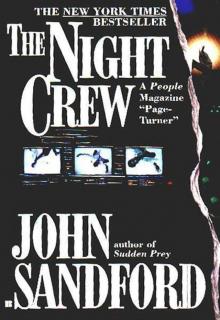 The Night Crew
The Night Crew Broken Prey
Broken Prey Mortal Prey
Mortal Prey Dark of the Moon
Dark of the Moon Twisted Prey
Twisted Prey Stolen Prey
Stolen Prey Deadline
Deadline Secret Prey
Secret Prey Rules of Prey
Rules of Prey Extreme Prey
Extreme Prey Bad Blood
Bad Blood Gathering Prey
Gathering Prey Rough Country
Rough Country Sudden Prey
Sudden Prey Silken Prey
Silken Prey Buried Prey
Buried Prey Invisible Prey
Invisible Prey Silent Prey
Silent Prey Deep Freeze
Deep Freeze Bloody Genius
Bloody Genius Naked Prey
Naked Prey Winter Prey
Winter Prey Dead Watch
Dead Watch Escape Clause
Escape Clause Neon Prey
Neon Prey The Fool's Run
The Fool's Run Mind Prey
Mind Prey Easy Prey
Easy Prey The Devil's Code
The Devil's Code Chosen Prey
Chosen Prey The Lucas Davenport Collection, Books 11-15
The Lucas Davenport Collection, Books 11-15 Shock Wave
Shock Wave Shadow Prey
Shadow Prey Naked Prey ld-14
Naked Prey ld-14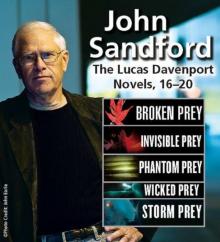 Lucas Davenport Novels 16-20
Lucas Davenport Novels 16-20 Invisible prey ld-17
Invisible prey ld-17 Lucas Davenport Collection: Books 11-15
Lucas Davenport Collection: Books 11-15 Masked Prey
Masked Prey![[Prey 11] - Easy Prey Read online](http://i1.bookreadfree.com/i/03/22/prey_11_-_easy_prey_preview.jpg) [Prey 11] - Easy Prey
[Prey 11] - Easy Prey Silent Prey ld-4
Silent Prey ld-4 Storm prey ld-20
Storm prey ld-20 Eyes of Prey ld-3
Eyes of Prey ld-3 Certain prey ld-10
Certain prey ld-10 Lucas Davenport Collection
Lucas Davenport Collection Sudden prey ld-8
Sudden prey ld-8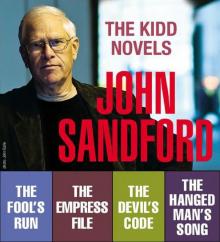 Kidd and LuEllen: Novels 1-4
Kidd and LuEllen: Novels 1-4 Silken Prey ld-23
Silken Prey ld-23 Mad River vf-6
Mad River vf-6 Bad blood vf-4
Bad blood vf-4 Broken Prey ld-16
Broken Prey ld-16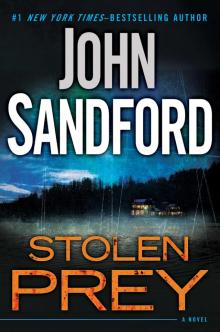 Stolen Prey p-22
Stolen Prey p-22 Night Prey ld-6
Night Prey ld-6 Outrage
Outrage Mind prey ld-7
Mind prey ld-7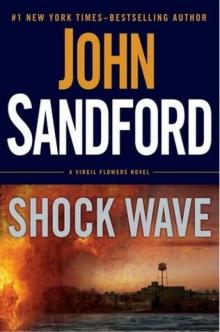 Shock Wave vf-5
Shock Wave vf-5 Easy Prey ld-11
Easy Prey ld-11 Prey 7 - Mind Prey
Prey 7 - Mind Prey Winter Prey ld-5
Winter Prey ld-5 Holy Ghost
Holy Ghost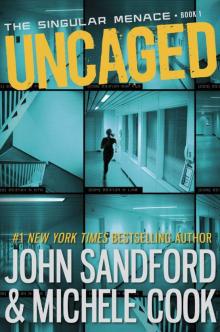 Uncaged
Uncaged Rampage
Rampage Hidden Prey ld-15
Hidden Prey ld-15 Buried Prey p-21
Buried Prey p-21 Secret Prey ld-9
Secret Prey ld-9 Chosen Prey ld-12
Chosen Prey ld-12 Phantom prey ld-18
Phantom prey ld-18 Mortal Prey ld-13
Mortal Prey ld-13 Saturn Run
Saturn Run Wicked Prey
Wicked Prey The Hanged Man’s Song
The Hanged Man’s Song Rough country vf-3
Rough country vf-3 Prey 25 - Gathering Prey
Prey 25 - Gathering Prey